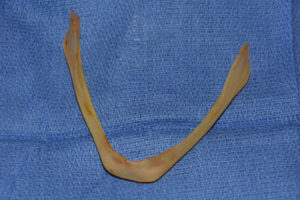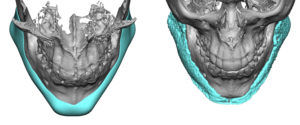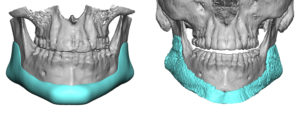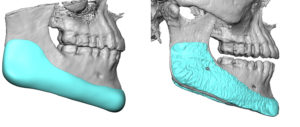Augmentation of the entire jawline has become a popular method for improvement of the lower third of the face. While historically lower facial augmentation was focused on the front half of the jaw (chin), a more contemporary approach considers the jaw angles behind the chin for a complete jawline effect. While most people who seek jawline enhancement will do well with a ‘three-piece’ approach (standard chin and jaw angle implants), some patients need a one-piece jawline implant to achieve their aesthetic goals.

Beyond the design phase, the primary role of the surgeon is to insert the implant and place it as it was designed on the bone in the 3D CT scan. This may sound simple but the reality is that it is a technically challenging procedure to achieve both a good fit and to do so with minimal incisional scarring and surrounding tissue trauma.
Like all facial implants a custom jawline implant can end up malpositioned or have some external aesthetic asymmetry concerns. It is prudent to wait a minimum of six weeks or longer after implant surgery to ensure that most of the swelling has subsided and tissue adaptation has occurred should either of these implant concerns be investigated.
While in days past surgical exploration and facial implant evaluation was done to determine the problem and attempt to resolve it, that should not be the approach with custom jawline implants in particular. There is too much implant volume and surface contact with the mandible to have an accurate evaluation of the problem. In addition much of the implant can not be seen through the limited incisions that were used to insert and position it.

3D CT scanning is both a necessary preoperative requirement for a custom jawline implant as well as an ideal postoperative method for evaluating implant positioning concerns. Despite the often non-smooth appearance of the implant in a postoperative 3D CT scan, that does not affect its ability to provide clear insight into how the implant sits on the lower jaw bone.
Dr. Barry Eppley
Indianapolis, Indiana




